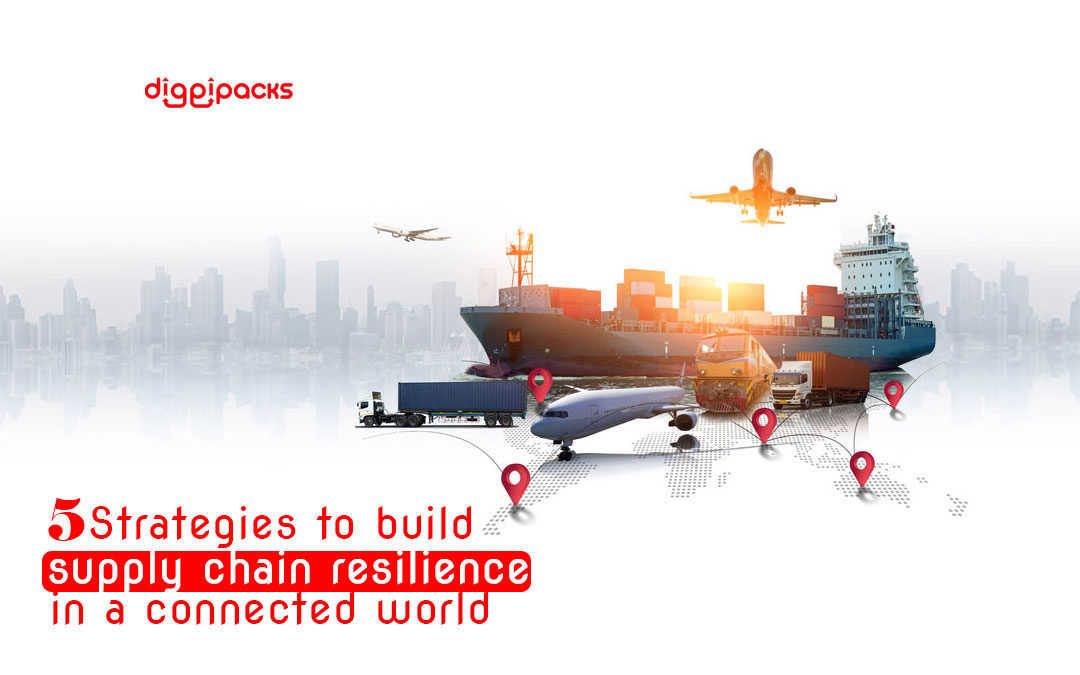Supply chain resilience is a key component of business success. It refers to more than just an efficient supply chain network. The term also refers to a company’s ability to outperform anticipated threats and disruptions, besides the ability to recover quickly and efficiently, in this article we will show you 5 strategies to build Supply Chain Resilience in a Connected World.
What is supply chain resilience?
Before we start talking about the five strategies for building supply chain resilience in a connected world, we will first need to know what supply chain resilience is.
Supply chain resilience is the ability of the supply chain to anticipate and resist the unforeseen events, which result in supply chain disruption.
This is very important for e-commerce solutions companies, which need to establish a strong supply chain along with other plans and processes,
With the aim of satisfying customers, this ensures business continuity in light of unexpected disruptions.
5 strategies to build more resilient supply chains

Now after we know what supply chain resilience is, we can talk about the five strategies for building supply chain resilience:
1. Distribute your inventory across multiple locations
The first strategy is to distribute your inventory to more than one warehouse, in order to face the possibility of any natural disaster or emergency event that prompts you to close your warehouse.
The main advantage of this is the ability to reach customers faster and thus expand customer reach, as well as speed up shipping time and reduce shipping costs.
If anything unexpected happens that prompts you to close your warehouse, you will fail to fulfill customer orders with more delays and delays that customers hate so much, which will affect your reliability and subsequently your revenue and profits.
2. Understand your data
The second strategy is related to understanding the data of your facility. Gaining a real-time view of your supply chain will help you build resilience in several ways, the most important of which are:
- Better inventory control.
- Enhanced ability to track supply chain performance.
- Speed up access to historical inventory and demand data.
By understanding the data well, you will be able to improve your inventory levels, by determining the amount of safety stock that you will be able to store, and this is very important if you know, especially that the buffer stock or safety stock can lead to a significant increase in costs.
So, you need to accurately plan the temporary stock levels, and in this case you can use the warehouse management system, which is one of the forms of modern technology, and you can also synchronize it with your inventory management software.
3. Partner with multiple suppliers
The third strategy is to partner with a number of suppliers, which will make you immune to risk, especially when the primary supplier cannot be delivered due to shortages or trade restrictions.
Therefore, the process of partnering with a different group of suppliers will help you greatly in reducing the risks resulting from lack of inventory, and thus avoid the problem of disrupting your supply chain.
This, in turn, will fulfill customer demand at any time, even if there is a shortage of e-commerce stock for example.
4. Leverage different carriers
The fourth strategy is to try to take advantage of different carriers, thus avoiding shipping delays, as by using multiple carriers, you have more flexibility in shipping.
You can turn to a third party to help you improve your shipping strategy without having to manage multiple partners yourself, which also saves you time, effort and money.
5. Rely on logistics experts
Fifth and final strategy, relying on logistic experts can help you build your supply chain’s resilience in an excellent way.
It is not just about providing a strong supply chain infrastructure, but also having a number of logistic experts will make a big difference.
These logistical experts will anticipate any potential disruptions, and thus the possibility of avoiding them before they occur, or plan ahead for them.
So you notice that there are a large number of companies, especially e-commerce companies cooperating with third party logistics (3PL).
Outsourcing your logistics has never been easier

The process of outsourcing logistics has become easier than ever, due to the great advances in technology and the adoption of the highest level of technology by a large number of parties.
Diggipacks can provide you with the latest technology and technology that you will need for your online store, from syncing your store to being able to track and manage inventory and orders from your dashboard

Recent Comments